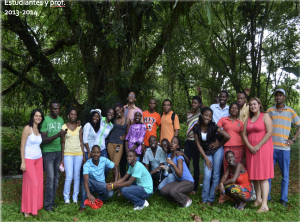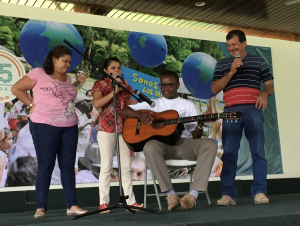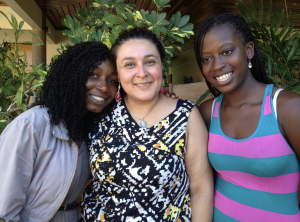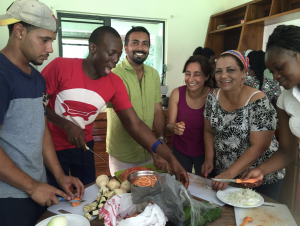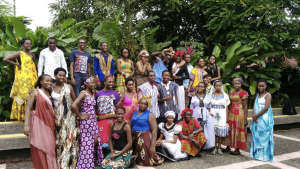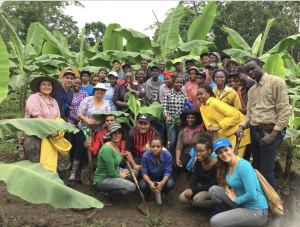A decade of EARTH’s Spanish-immersion program
For our students, getting to EARTH University requires effort, perseverance, and leadership. For some, it even requires learning a new language – while also being enveloped in a foreign culture that often sharply contrasts with their own.
The Programa de Español e Inducción Intercultural, our signature Spanish-language immersion program, was created to support incoming EARTH students from Africa, as well as those from non-Spanish-speaking countries of the Western Hemisphere – such as Haiti, Jamaica, Brazil, and others.
On August 26th, the program celebrated 10 years of operations – a decade of successfully supporting 310 students from 33 countries as they learned to read, write, and speak another language.
“I was one of the first students in the immersion program,” says Niyi Omidire (’15, Nigeria). “I achieved all my fluency goals with the help of the teachers. New EARTH students too can achieve their goals by putting all their effort into their studies.”
Adapting to a pandemic
Prior to COVID-19, program participants would travel to Costa Rica in August, before the start of the academic year in January. For five months, they would complete intensive Spanish classes at EARTH’s Guácimo Campus and live with host families in the surrounding communities. Then, in January, they would move to the on-campus student residential buildings, where they would be placed in a dorm room with a native Spanish-speaking student. This process enabled a more effective cultural transition and, at the same time, greater closeness between our off-campus neighbors, host families, and the University.
“Our program is a bridge – between non-Spanish-speaking students and stronger educational attainment, and between local families and the University’s multiculturalism,” says Patricia Montero, program coordinator. “One time we had five students doing homestays on the same street. That generated an invaluable cultural exchange for the rural community of Mercedes.”
In 2020, however, participating students did not travel to Costa Rica five months early. Instead, they remained in their countries of origin and experienced language learning in a virtual format. The teachers adapted each lesson to facilitate effective remote learning and to foster rapport with the new EARTHianos, knowing they are often the first campus mentors to these students.
Regardless of the program’s modality, the teachers strive to make their classes dynamic and fun. Azalea Morales, who has been with EARTH since the program’s founding, uses popular Latin American songs to teach grammar. This type of pedagogy – based on the Communicative Approach – enables students to put the target language into practice from day one.
To forge a deeper cultural connection and spark daily conversations in Spanish despite the distance, a virtual peer-to-peer program was also implemented in 2020. Latin American students from the upper-level cohorts signed a letter of commitment to become conversation partners with the new students.
Promoting growth
“We are constantly improving our approach,” Montero adds. “For example, teacher Emilia Villalobos developed special workbooks that use the language of the University. Each year is different. Of course, 2020 changed us because we had to train our team on new technology and modify our class schedule to accommodate those students logging on from Africa. It was a challenge that taught us a lot.”
In months, the students in our immersion program gain the ability to converse and comprehend complex technical vocabulary in Spanish. The support provided by the teachers during the 12 months of the immersion program is essential for the students’ academic and social success.
Many thanks are owed to the dynamic work of our teachers, who have facilitated the learning process over these past 10 years and will continue to evolve during the years to come. ¡Muchas gracias!

